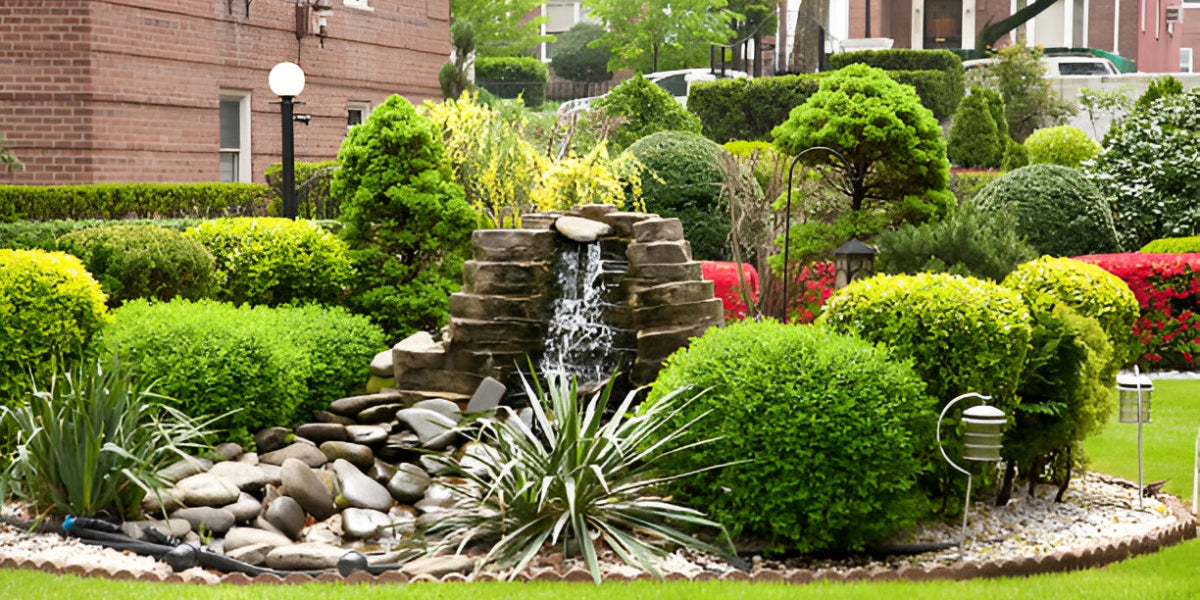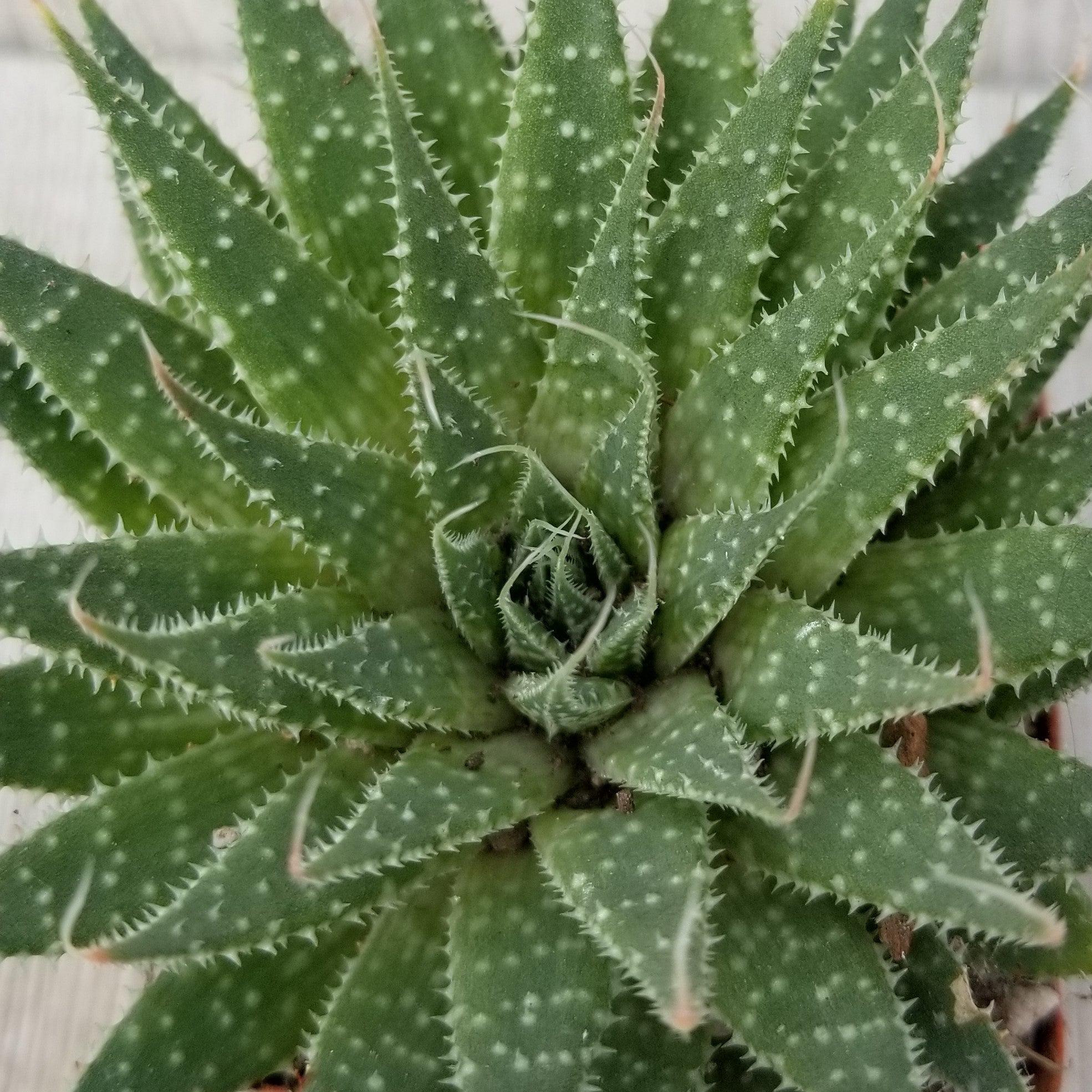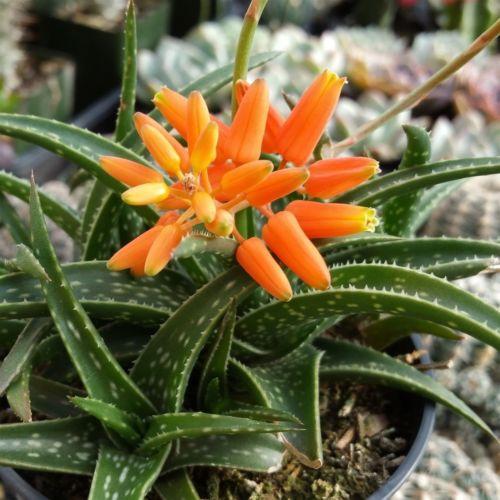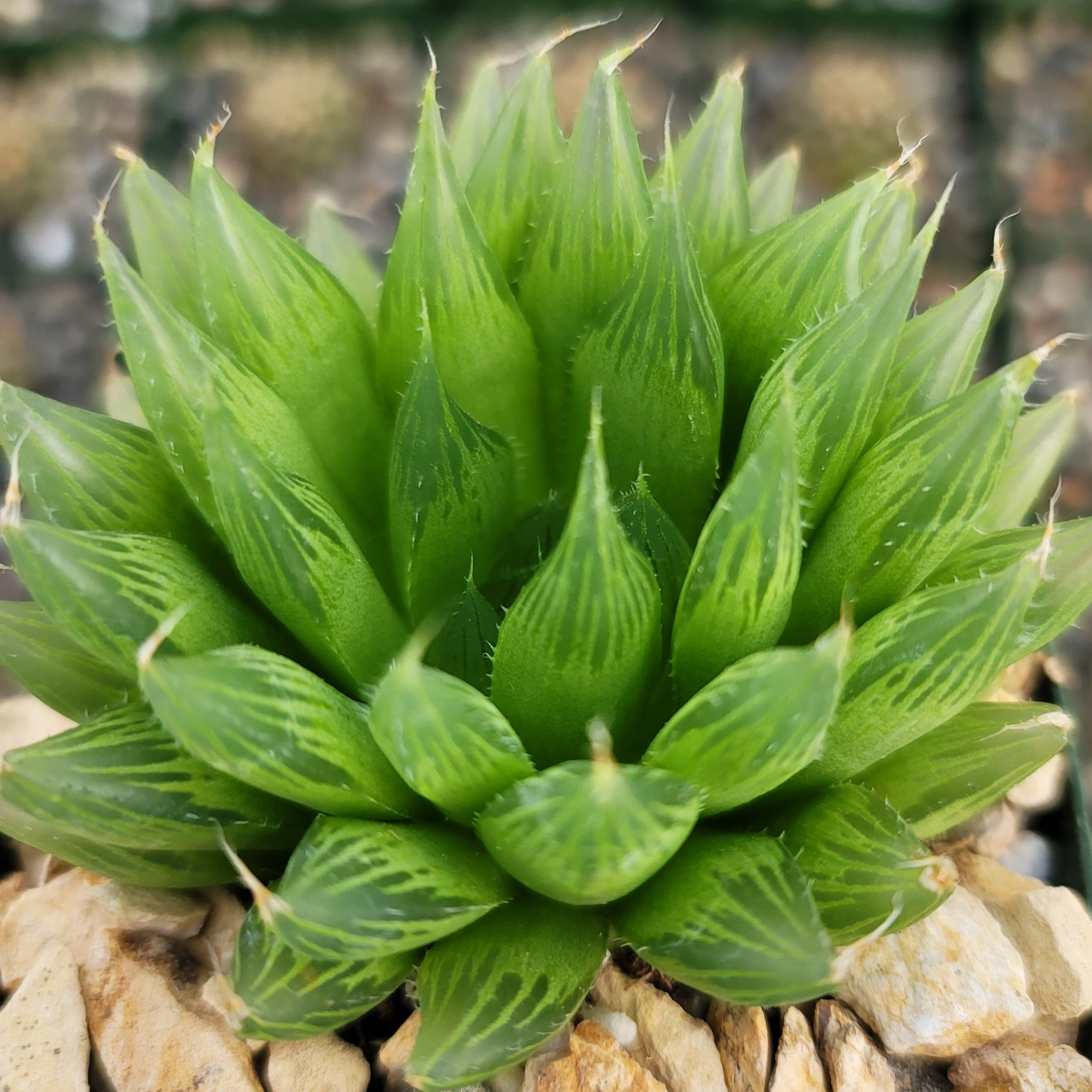How to Care for Aloe Vera Plants & Health Benefits – Everything You Need to Know!
Updated: January 28, 2025

Aloe vera, a popular plant with lance-shaped leaves and jagged edges, it is known for its air-purifying properties and dermatologist-approved benefits like reducing acne, and wrinkles, healing wounds, and easing sunburn irritation. It's like having a natural pharmacy right in your own home or garden!
All About Aloe Vera Plants

Aloe vera is the most popular out of over 300 varieties of the Aloe genus.
The large Aloe vera plant boasts fleshy lance-shaped grey-green leaves with small white teeth along the edges growing out from a starfish-like basal rosette.
Its leaves are filled with a gel-like substance; known for its renowned sunburn healing properties.
Native to the Arabian Peninsula, it's now one of the most popular plants in United states because of its natural healing qualities.
Aloe vera can reach a mature height of around 3 feet tall and 2 feet wide. These fleshy leaves can grow up to 2 feet long and are usually green or grey-green in color.
If given the proper growing conditions for your aloe vera plant, spiky flowers in yellow, red, or orange will appear at the ends of the stalks.
Top Benefits of Aloe Vera for Your Health & Skin
Aloe vera is a medicinal plant with antioxidant and antibacterial properties. It may help improve skin conditions such as burns, wounds, and eczema when applied topically. Additionally, consuming aloe vera juice internally may aid in digestion and support overall gut health due to its anti-inflammatory properties.
Heals and Soothes the Skin: Aloe vera gel is renowned for its soothing and healing properties for the skin. It is commonly used as a topical medication for treating burns, sores, and sunburns. The gel inside the aloe vera leaves contains compounds that can moisturize and nourish the skin, leaving it feeling refreshed and rejuvenated.
Improves Skin Tone & Can Help Prevent Wrinkles: Aloe vera is a natural moisturizer that hydrates and softens the skin, making it suitable for dehydrated skin. It contains antioxidants that combat aging signs by improving skin elasticity and collagen production. It also aids in healing acne scars and blemishes, promoting a clearer, healthier complexion.
May Help with Tooth & Gum Diseases: Tooth decay and gum diseases are common health issues, and reducing plaque buildup is crucial. Aloe vera gel is also effective in killing Candida albicans, a yeast found in the mouth.
Helps With Hair and Scalp Health: Aloe vera is a popular ingredient in shampoo and conditioner products, known for its hair health benefits, particularly in treating seborrheic dermatitis. It also serves as a natural conditioner, promoting healthy, shiny hair. Look for shampoos, conditioners, and hair masks with aloe vera on the label.
Helps with Acid Reflux, Heartburn & Constipation: Aloe vera juice can reduce inflammation and soothe irritation in the esophagus, providing relief from acid reflux and heartburn.
Remember, these are just some of the many benefits of aloe vera. It's always a good idea to do further research or consult with a healthcare professional before using aloe vera for specific purposes.
DIY Aloe Vera Gel & Juice
Learn how to make your own Aloe Vera Gel and Aloe Vera Juice later in this article after the care section.
Aloe Vera Care: Tips and Tricks for a Thriving Plant
Whether you purchased an aloe plant from a nursery, received one from a friend, or ordered one from our collection of plants for delivery, you'll need to know how to care for your Aloe vera plant! Give your green plant some love and attention to keep it happy.
Quick Reference

Bloom Season
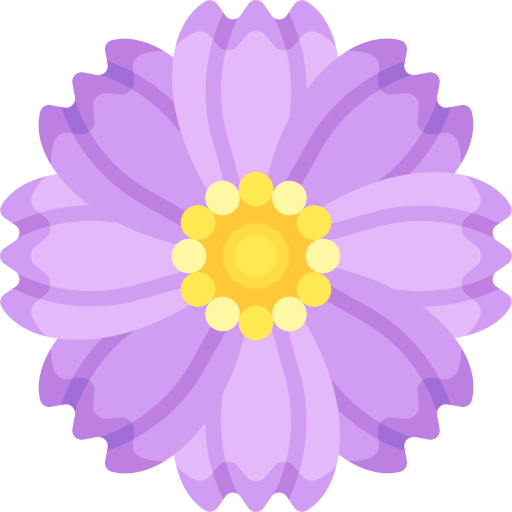
Flower Color

Growth Rate

Hardiness Zone

Mature Size

Plant Type

Sun Exposure

Toxicity

Watering Needs
How Often to Water Aloe Vera Plants

Like other succulents, Aloe vera plants also store water in their fleshy leaves.
When it comes to watering your plant, it's important to strike a balance to prevent overwatering or underwatering.
Aloe vera plants originated in hot, sandy desert environments with hot weather. As a result, these plants thrive in hot, dry climates with a low tolerance for overwatering.
Excess water causes the leaves of an aloe plant to brown or yellow. They frequently feel mushy and may emit a slightly rotten odor. When you lift the plant out of its container, you may notice the roots turning black. This is a sign of root rot, which occurs when the roots are constantly sitting in waterlogged soil. To save the plant, remove it from the container, trim off any affected roots, and repot it in well-draining soil.
As a rule of thumb, you can water your Aloe Vera plant deeply but infrequently. Wait until the top inch or two of the soil feels completely dry before watering again.
In the spring and summer, during the growing season, you may need to water your aloe vera plant for 2-3 weeks and reduce watering to once a month during the winter months. Additionally, make sure the soil is completely dry before watering again to prevent root rot. However, be cautious not to overwater, as this can lead to root rot and other issues.
Instead of watering on a schedule, observe your plant's leaves. When they start to appear slightly wrinkled or droopy, it's a sign that your aloe vera needs water. This method, known as the "leaf plumpness test," allows you to gauge the plant's hydration needs visually. It's a helpful way to ensure you're watering your aloe vera at the right time, preventing both overwatering and underwatering.
Pro Tip
Instead of watering from the top, try watering from the bottom. Place your potted plant in a shallow tray filled with water and allow the plant to soak up the water through the drainage holes at the bottom of the pot. This method ensures that the roots receive adequate moisture without risking waterlogging the plant.
Shedding Light on Aloe Vera Lighting Needs
Some varieties may thrive in bright, indirect light, while others prefer direct sunlight for a few hours each day. It is important to research the specific lighting needs of your Aloe Vera plant to ensure its optimal growth and health.
-
Indoors - Bright but Indirect
When growing aloe vera indoors, they love lots of bright, indirect light. Find a sunny spot near a window where it can soak up the rays. However, be careful not to expose it to direct sunlight for too long, as it can scorch the leaves. If you don't have a sunny window with some natural light, you can use artificial grow lights placed about 12 inches above the plant to provide enough light. Aim for around 12-16 hours of light per day to keep your succulent happy and healthy indoors.

-
Outdoors - Protecting from Intense Sunlight
For planting Aloe Vera outdoors, they'll enjoy a sunny spot with up to 6 hours of full sunlight or partial shade. They can handle some direct sun, but it's best to gradually acclimate them to prevent sunburn. Start by placing it in a shaded area and gradually move it to a sunnier spot over a few weeks. This will help the plant adjust to the increased bright sunlight exposure and avoid any damage from the sun.
Pro Tip
If growing aloe vera in pots, it is a good idea to rotate them every few weeks; as they tend to lean towards the light source. So, rotating them regularly will ensure even growth and prevent them from leaning too much in one direction. This way, it will receive as much light from all angles, keeping it balanced and looking its best.
Soil Secrets and Fertilizer Facts: Unlocking the Needs of Your Aloe Vera Plant
When it comes to soil, the Aloe vera thrives in well-draining soil. Succulents require fast-draining soil that dries completely between waterings. Your soil must have a sandy texture and a low water-holding capacity, just like desert soil. Soggy wet soil can damage your plant and contribute to bacterial and fungal rot. Ideally, you want to use our specialized succulent potting mix that contains 5 natural substrates and organic mycorrhizae to promote the development of a strong root system that helps your succulent to thrive.
If you prefer a DIY approach, you can create your own soil mix by combining equal parts of regular potting soil, coarse sand, and perlite. This mixture allows water to flow through easily, preventing waterlogging and root rot.

Aloe vera plants don't require frequent fertilization as they are not heavy feeders. Using too much fertilizer can actually harm them. It's best to fertilize sparingly, about once a year during the active growing season, which is typically in spring. Look for a balanced (5-10-5), water-soluble NPK fertilizer specifically formulated for succulents. Follow the instructions on the fertilizer packaging for the correct dilution ratio and application frequency.
From Cozy Homes to Sunny Gardens: Aloe Vera’s Temperature Needs for Indoor and Outdoor Settings
Aloe vera plants are well suited to grow inside your home and they thrive in average room temperatures between 55°F and 85°F. As for humidity, they are adaptable and can tolerate average indoor humidity levels. They don't require high humidity, but if the air in your home is particularly dry, you can increase humidity by placing a tray of water near the plant or using a humidifier.

Aloe vera plants are native to warm climates and are typically grown outdoors in USDA hardiness zones 9 to 12. These zones include regions with mild winters and year-round warm temperatures. However, if you live in a colder climate, you can still grow indoors as a houseplant or keep it in a container that you can bring indoors during the colder months. They can tolerate temperatures as low as 40°F but may suffer damage if exposed to frost or freezing temperatures.
Pro Tip
When growing indoors, it's a good idea to rotate the plant occasionally. This helps ensure even growth and prevents the plant from leaning towards the light source. Simply give your aloe vera a quarter turn every few weeks to promote balanced growth and keep it looking its best!
Aloe Vera Gel Vs. Juice – The Difference & How to Make them at Home
Aloe vera gel is typically used for external purposes, like applying it to your skin or hair. On the other hand, aloe vera juice is meant to be taken internally, like drinking it for its potential health benefits. It's pretty cool how versatile it can be.
1. Aloe Vera Gel
Aloe vera gel is good for external skin care due to its soothing and hydrating properties, which reduce inflammation and redness. It is also used to treat sunburn, acne, and dry skin. Aloe Vera gel is the clear, gel-like substance found inside the leaves of the aloe vera plant. The 100% pure aloe vera gel is commonly used topically as aloe vera lotion for its soothing and moisturizing properties. Aloe gel is often found in skincare products like lotions, creams, and sunburn treatments. It can help hydrate the skin, reduce inflammation, and promote wound healing.

How to Extract Gel from an Aloe Vera Plant?
- Select a mature aloe vera leaf: Choose a leaf from the outermost part of the plant, as these are usually the most mature and contain more gel.
- Cut the leaf: Using a sharp knife, cut the leaf as close to the base of the plant as possible.
- Let the yellow sap drain: Place the cut leaf upright in a bowl or container and let the yellow sap drain out. It's important to remember that the yellow part, known as latex, can be harmful. This sap can cause irritation, so it's best to let it drain before extracting the gel. Although aloe vera gel is safe to consume, the presence of yellow sap in the gel can be harmful.
- Rinse the leaf: To remove any remaining latex from the cut leaf, thoroughly rinse it with cold water.
- Remove the thorny edges: Use a knife to carefully trim off the thorny edges of the leaf. This will make it easier to handle and extract the gel.
- Peel off the skin: With a knife or your fingers, gently peel off the green skin from one side of the leaf. You should reveal the clear, gel-like substance underneath.
- Scoop out the gel: Use a spoon or your fingers to scoop out the gel from the leaf. Collect it in a clean container or directly apply it to your hair or skin.
- Store the remaining gel: If you have excess gel, you can store it in an airtight container in the refrigerator for future use. It should last for weeks.
Remember, it's always a good idea to do a patch test before applying gel to your skin or hair to ensure you don't have any adverse reactions.
2. Aloe Vera Juice
Aloe vera juice is consumed for its internal health benefits, aiding digestion and promoting a healthy digestive system. It can soothe the stomach, reduce acid reflux and heartburn symptoms, and have natural laxative properties, that can manage irritable bowel syndrome (IBS). Aloe juice is typically consumed orally in a small quantity as a beverage or Aloe vera drink. The potential health benefits of Aloe Vera juice are well-known, such as aiding digestion, supporting the immune system, and providing hydration.

How to Make Aloe Vera Juice?
- Select a mature aloe vera leaf: Choose a leaf from the outer part of the plant, as these are usually more mature and contain more gel.
- Cut the leaf: Using a sharp knife, cut the leaf as close to the base of the plant as possible.
- Let the yellow sap drain: Place the cut leaf upright in a bowl or container and let the yellow sap drain out. This sap can cause irritation, so it's best to let it drain before making the juice.
- Remove the thorny edges: Use a knife to carefully trim off the thorny edges of the leaf. This will make it easier to handle and extract the gel.
- Scoop out the gel: With a spoon, scoop out the gel from the leaf and collect it in a clean container. Also, when scooping the gel, be careful not to go all the way down to the rind to avoid getting any of the yellow parts in your juice.
- Blend the gel: Put the collected gel into a blender and add some water. The ratio of gel to water can vary depending on your preference, but a common ratio is 1:2 (1 part gel to 2 parts water).
- Blend until smooth: Blend the gel and water mixture until it becomes smooth and well combined.
- Strain the mixture: Use a fine mesh strainer or cheesecloth to strain the juice and remove any remaining pulp or solid particles.
- Serve and enjoy: Pour the strained juice into a glass and drink it immediately. You can also add some honey or lemon juice for added flavor if desired.
Remember, sometimes, when you begin using natural remedies, things may get worse before they improve. It's important to start with a lower strength and make sure you're getting a good quality source. Some people might be more sensitive than others, so it's always a good idea to consult with a doctor. But overall, drinking aloe vera juice in small quantities can be really beneficial for your health!
Dosage & Precautions for Internal Consumption
- If you have diabetes, it's best to avoid taking aloe vera orally as it can lower blood glucose levels.
- Children under 12 and pregnant or breastfeeding women should avoid taking it orally, but they can still use it topically.
- If you have digestive disorders like Crohn's, it's best to steer clear of drinking any aloe preparations.
- It's important to note that aloe latex can be mildly toxic to cats, dogs, and other pets, so it's best to keep them away from it.
When using orally, it's best to start with a small amount of ale vera extract. If you tolerate it well, you can gradually increase the amount over time. However, it's important to observe your body and not exceed the recommended dosage. Remember, everyone's body is different, so what works for one person may not work for another. If you have any concerns or specific health conditions, it's always a good idea to consult with a healthcare professional.
Potting and Repotting Aloe Vera – What you should Know
When it comes to potting your Aloe vera plant, it's important to choose the right size and type of pot. It prefer well-drained pots, so opt for one with drainage holes at the bottom. Use a potting mix specifically formulated for succulents or cacti or create your own by mixing equal parts of potting soil, perlite, and coarse sand. Gently place your plant into the pot, ensuring that the roots are covered with soil, but not buried too deep.

As your aloe vera plant grows, it may outgrow its current pot. If you notice roots poking out of the drainage holes or the plant becoming top-heavy, it's time to replant it. To Repot your Aloe Vera plant choose a new pot that is slightly larger than the current one, allowing room for the roots to spread. Carefully remove the plant from its current pot, loosen the root ball, and place it into the new pot with fresh potting mix. Be sure to water the plant after repotting to help it adjust to its new home.
Pro Tip
It's important to choose the right type of container. A pot made from terra-cotta, or a similarly porous material, is recommended because it allows excess water to be absorbed through the pot's walls, preventing waterlogged soil and ensuring that the soil dries thoroughly between waterings. Additionally, terra-cotta pots are heavy enough to keep the plant from tipping over. This makes them an ideal choice for plants that require well-draining soil and a stable environment.
How to Propagate Aloe Vera Plant from Cuttings
- Choose a healthy mature aloe vera plant.
- Prepare a well-draining potting mix.
- Gently remove a mature leaf from the base of the mother plant.
- Allow the leaf to dry for a few days to form a callus.
- Plant the calloused end of the leaf into the potting mix, burying it about an inch.
- Place the pot in a warm and bright location but avoid direct sunlight.
- Water sparingly, allowing the soil to dry out between waterings.
- After a few weeks, you should start to see new roots and a small plant forming.
- Once the new plant has established roots, you can transplant it into a larger pot.
Remember, aloe vera plants are quite resilient, so don't worry if it takes a little time for them to start growing. Additionally, before you remove the aloe pups, make sure they're at least one-fifth the size of the aloe plant.

How to Encourage Aloe Vera Plant to Bloom
The flowers of the Aloe Vera typically appear on mature plants that are at least four years old. Aloe vera plants, resembling Red Hot Poker plants, have tubular yellow and orange blooms on a stiff flower stalk. The same cultural attention as non-blooming plants is needed for them, and once all the petals have fallen, spent flowers should be disposed of.
When planted as houseplants, aloe plants might be challenging to get flowers. The many varieties produce a rainbow of hues dependent upon variety. Thick clusters of blooms open from top to bottom, revealing buds, and fully formed flowers simultaneously.
To encourage your aloe vera plant to bloom, it's important to create the ideal growing conditions. Aloe vera plants thrive in warm temperatures, ideally between 70°F and 85°F. They also prefer drier conditions, so avoid overwatering. Allow the soil to dry out completely between waterings and be cautious not to let the plant sit in standing water, as this can lead to root rot. Providing a balanced fertilizer once a year can also support healthy growth and flowering.
How to Properly Prune Your Aloe Vera Plant?

Pruning an aloe vera plant is a great way to keep it healthy and looking its best.
It requires pruning when leaves are shriveled, dead, or damaged by environmental factors and if the outer leaves turn brown at the tips.
When it comes to pruning, you'll want to focus on removing any dead or damaged leaves.
Simply grab a pair of clean, sharp scissors or pruning shears. Carefully trim off any leaves that are brown, wilted, or dried out.
Be sure to make clean cuts close to the base of the plant. Pruning can also help control the size and shape of your aloe vera plant.
If it's getting too big or leggy, you can trim back the outer leaves to encourage new growth from the center. Just remember to be gentle and avoid cutting into the healthy leaves.
Overwintering Your Aloe Vera Plant for a Thriving Indoor Oasis
As the temperatures drop, it's time to give your beloved aloe vera plant some extra TLC during the winter months. It cannot tolerate frost and should be grown in containers in cold climates where temperature drops below 40°F. By bringing your plant indoors during the colder months, you can protect it from frost and provide it with the warmth it needs to thrive.
You can leave outdoor plants in USDA zones 9 through 11 alone in the ground and not water them during their dormant season. If frost is predicted, cover the plants with sheets or blankets to keep them warm until the threat has passed.
How to Plant Aloe Vera: Container Vs. Outdoor
Aloe Vera can be planted either in containers or outdoors, depending on your climate and space availability. Container planting allows for easy mobility and control over growing conditions, while outdoor planting provides ample space for the plant to spread and thrive naturally. Consider factors such as sunlight exposure, soil drainage, and temperature fluctuations when deciding where to plant.
Planting In a Pot / Container
- Select a terracotta pot or container made of porous clay with drainage holes to prevent waterlogging. Because of its porous nature, moisture is quickly released from the plant pot, preventing overwatering and soggy soil.
- Fill the container with well-draining potting soil, leaving some space at the top.
- Gently remove the plant from its nursery pot, being careful not to damage the roots.
- Place the plant in the center of the container, ensuring that the top of the root ball is slightly below the rim.
- Fill the remaining space with potting soil, leaving a small gap between the soil surface and the rim.
- Water the plant thoroughly, allowing excess water to drain out of the bottom.
Planting Outdoors
- In USDA zones 9-11, choose a sunny location in your garden or yard with well-draining soil.
- Dig a hole that is slightly wider and deeper than the root ball of the aloe vera plant.
- Gently remove the plant from its container and loosen the roots.
- Place the plant in the hole, ensuring that the top of the root ball is level with the soil surface.
- Backfill the hole with soil, gently firming it around the plant.
- Water the newly planted aloe vera thoroughly, allowing the soil to drain.

Other Popular Types of Aloe Plants for Sale
There are actually many different types of aloe plants, with around 300 species in the aloe genus. To learn about or buy different types of aloe plants, then explore all our Aloe plants that we sell here at Planet Desert.
While there are no specific varieties of aloe vera beyond the well-known aloe vera itself, there are a few other aloe species that share similar characteristics with aloe vera. This is where the confusion can arise. People might come across these other aloe species and mistakenly think that they are a type of aloe vera due to their similar properties. However, it's important to note that these species are not the same as aloe vera.

Aloe arborescens
This species is known for its soothing gel, just like aloe vera. It's often used for its potential healing properties and is sometimes referred to as "torch aloe."

Aloe chinensis
Also known as "desert aloe," this species is native to California and Baja California. It has been used in traditional Native American medicine for various purposes, including soothing skin irritations and promoting wound healing. Most websites refer to it as the most popular type of Aloe vera, but scientists continue to debate whether it is a vera hybrid or a different species.

Aloe ferox
Also known as "Cape aloe," this species has a gel-like substance that is believed to have similar soothing properties to aloe vera. It's often used in skincare products and herbal remedies.

Aloe california
Aloe California has the same healing qualities as aloe vera, offering the potential health benefits of helping to heal wounds and burns, and it has antibacterial, antiviral, and antifungal properties.

Aloe brevifolia
This species, also known as "short-leaved aloe," has a gel-like substance that is believed to have soothing properties, just like aloe vera. It's native to South Africa.

Aloe maculata
Commonly called "soap aloe," this species has a gel that is used in skin care products and is known for its potential healing properties. It's native to South Africa and is often cultivated as an ornamental plant.
Common Pests and Problems of Aloe Vera Plants
The strong and durable Aloe vera plant is resistant to the majority of Pests. Despite being simple to uphold, growing Aloe vera can present some challenges.
Pests:
- Mealybugs: These small, cottony insects can infest the leaves and stems of plants.
- Aphids: These tiny insects can cluster on the leaves and cause damage by feeding on the plant sap.
- Spider mites: These minuscule pests can create webbing and damage the leaves of your plant.
- Scale insects: These small, round pests can attach themselves to the leaves and stems, causing harm.
Plant Diseases:
- Root rot: Overwatering or poor drainage can lead to root rot, causing the roots to decay.
- Leaf spot: Fungal infections can cause dark spots or lesions on the leaves of aloe vera.
- Soft rot: This bacterial disease can cause the leaves and stems to become mushy and discolored.
- Powdery mildew: A white, powdery fungal growth can appear on the leaves, affecting their health.
Where to buy Aloe Vera plants?
When it comes to buying Aloe Vera plants for sale, you can check out local nurseries or garden centers in your area that specialize in succulents. But Planet Desert is your easiest and best option if you're looking to buy affordable cacti online and have them conveniently shipped right to your door!
Here is the link to our product page for the Aloe vera plant. Here at Planet Desert, we have a large selection of over 500 cacti & succulents in stock and we guarantee they will arrive happy and healthy.
Aloe Vera Plant Quick Growing Reference Guide
| Bloom Season | Summer |
|---|---|
| Botanical Name | Aloe barbadensis 'miller' |
| Common Name | Aloe vera, burn plant |
| Dormancy | Winter |
| Family | Asphodelaceae |
| Flower Color | Yellow, red, orange |
| Genus | Aloe |
| Growth Habit | Rosette |
| Growth Rate | Slow |
| Hardiness Zone | 9, 10, 11 |
| Mature Size | 3 ft. tall, 2 ft. wide |
| Native Area | Arabian Peninsula |
| Plant Type | Perennial succulent |
| Propagation | By cuttings, offsets |
| Resistance | Drought tolerant, heat resistant, pest resistant |
| Soil PH | 6.5, Acidic, Neutral |
| Soil Type | specialized succulent potting mix |
| Special Features | Medicinal plant |
| Sun Exposure | Full sun, partial shade |
| Toxicity | Mildly toxic for humans, mildly toxic for pets |
Final Thoughts
Overall, the Aloe vera plants are awesome. They live for several years and are known for their ability to thrive in dry, desert-like conditions. They have so many great features and benefits. First off, they're super easy to care for, making them perfect for both experienced plant lovers and beginners. Aloe vera is known for its gel-filled aloe leaves, which have incredible healing properties.
If you get a minor burn or skin irritation, just break off a leaf and apply the gel for soothing relief. However, topical Aloe vera is most likely safe to use. Plus, these are natural air purifiers, helping to improve the air quality in your home. Taking oral aloe vera gel supplements has been shown to have numerous health benefits, including reducing inflammation, improving digestion, and boosting the immune system. To keep your plant happy, make sure to place it in a sunny spot and water it sparingly, allowing the soil to dry out between waterings. So, if you're looking for a low-maintenance plant that offers both beauty and health benefits, Aloe vera is the way to go!
Frequently Asked Questions
-
How do you use Aloe Vera on face?
- Start by washing your face with a gentle cleanser to remove any dirt or makeup.
- Take an aloe vera leaf and cut it open lengthwise to expose the gel inside.
- Scoop out the gel using a spoon or your fingers and apply it directly to your face.
- Gently massage the gel into your skin using upward circular motions.
- Leave the gel on your face for about 15-20 minutes to allow it to absorb.
- Rinse off the gel with lukewarm water and pat your face dry with a clean towel.
- Follow up with your regular moisturizer to lock in the hydration.
Remember, it's always a good idea to do a patch test on a small area of your skin before applying aloe vera to your entire face, especially if you have sensitive skin.
-
How to plant and grow Aloe Vera plants?
- Choose a terracotta pot with drainage holes to plant your aloe vera.
- Fill the pot with well-draining soil, specifically formulated for succulents or cacti.
- Take a healthy aloe vera pup or offset from an existing plant or purchase a young aloe vera plant from a nursery.
- Place the pup or young plant in the center of the pot and gently cover its roots with soil.
- Find a bright spot with indirect sunlight for your plant.
- Water the plant thoroughly, allowing the soil to dry out completely between waterings.
- Avoid overwatering, as aloe vera plants are drought-tolerant and prefer dry conditions.
- Fertilize your aloe vera sparingly with a balanced, water-soluble fertilizer during the growing season.
- Trim off any dead or damaged leaves to promote healthy growth.
-
Does aloe vera need a lot of water?
Aloe vera doesn't need a lot of water, especially during the winter months. It's a succulent plant, which means it stores water in its leaves. During the growing season (spring and summer), you can water your aloe vera once every 2-3 weeks, allowing the soil to dry out between waterings. In the winter, reduce watering to once a month or even less, as the plant goes into a dormant period. It's important to remember that overwatering can be harmful to aloe vera, so always check the soil moisture before watering. Seasonal watering helps mimic the natural conditions that aloe vera would experience in its native habitat.
-
What is the benefit of using aloe vera?
Using aloe vera has many benefits! Here are a few:
- Soothes skin: Aloe vera has natural cooling properties that can help soothe sunburns, irritations, and inflammations on the skin.
- Hydrates and moisturizes: It is a great natural moisturizer that can help hydrate and nourish the skin, leaving it feeling soft and supple.
- Helps with acne: It has antibacterial properties that can help reduce acne and prevent further breakouts. It also helps to reduce redness and inflammation associated with acne.
- Anti-aging effects: It is rich in antioxidants that can help fight against free radicals, which can cause premature aging of the skin. It can help reduce the appearance of fine lines and wrinkles.
- Promotes hair health: Aloe vera can be used on the scalp to help promote healthy hair growth, reduce dandruff, and condition the hair.
-
How to grow aloe vera faster?
- Provide ample sunlight: Aloe vera plants thrive in bright, indirect sunlight. Place your plant near a sunny window or outdoors in a sunny spot.
- Water properly: While aloe vera is drought-tolerant, it still needs regular watering. Make sure to water the plant deeply, allowing the soil to dry out between waterings. Overwatering can lead to root rot.
- Use well-draining soil: They prefers well-draining soil to prevent waterlogged roots. Choose a potting mix specifically formulated for succulents or cacti.
- Give it space: These plants like to spread out, so make sure to give them enough room to grow. Transplant them into a larger pot if they become crowded.
- Provide warmth: They prefer warm temperatures, ideally between 55-85°F. Avoid exposing them to cold drafts or temperatures below 40°F.
Remember, plants have their own growth rate, so be patient and give your aloe vera the care it needs. With proper care and conditions, it should grow steadily.
-
Does Aloe Vera Plants Bloom?
Yes, Aloe vera can bloom. However, it's not very common for indoor aloe vera plants to bloom, as they typically require specific conditions to flower. Outdoors growing aloe vera plants, are more likely to bloom. The flowers of the aloe vera plant are usually tubular and come in various colors like yellow, orange, or red. Blooming typically occurs in mature plants under the right conditions.





